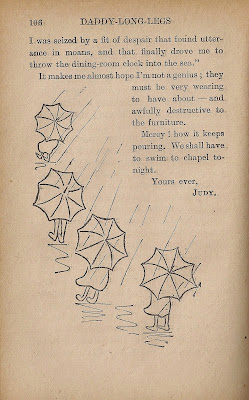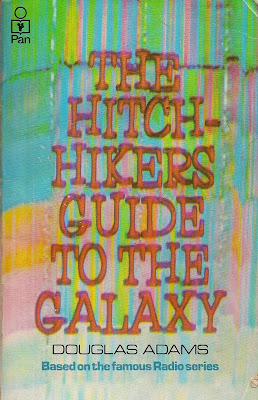Another series courtesy of my mother's childhood library. As with so many of my mother's books, her original copies were given away when she went off to university and two of my books were found (oh the triumph!) at a local school fete for a couple of pounds each. I can still remember the book stall was set up underneath a row of lime trees. Instead of the usual tables it was a run of elderly wooden bookshelves. Very inviting but quite hard to see the stock in the gloom of the limes.
The Far Distant Oxus and
Escape to Persia belonged to a Margareta Olsen who wrote her name in them in February 1943. Unbelievably
Oxus in Summer, also found at a fete, was a present to John Compton Miller in 1939; he grew up to marry my mother's cousin Josephine. My mother was a bridesmaid at the wedding in 1951. I think this is a first edition.
 |
| The Far Distant Oxus |
Katharine Hull and Pamela Whitlock were at boarding school together and wrote the first book in their spare time. Considering they were in different forms and different school houses this was a pretty amazing feat. The fact that they wrote a great book for children who love adventure stories, or ponies, or both, makes it all the more amazing. They also drew all the pictures, although I don't know who drew the maps.
This trilogy really should be better known. The writing is fresh and the plots are somehow quite different from very similar stories written by adults. Remember that in the 1930s 14 or 15 year olds were thought of a children. As they said themselves, they were stories written for children by children.
Hull and Whitlock sent their book to Arthur Ransome, author of the
Swallows and Amazons series. He read it and took it straight to his publishers Jonathan Cape who printed all three Oxus books. They also printed another book by Hull and Whitlock called
Crowns. I have a copy but have only read it once.
The first book introduces us to Bridget, Anthony and Frances Hunterly who have been sent to stay at Cloud Farm, the Exmoor home of Mr & Mrs Fradd. Their parents live in Sumatra which is too far to travel to even in the summer holidays. The Fradds keep ponies. The Hunterly children are mad about riding. Three ponies, Talisman, Timothy and Treacle are chosen and the adventure begins.
 |
| Oxus in Summer |
Very soon the Hunterlys encounter the mysterious Maurice, his beautiful black pony Dragonfly and his black labrador Elita, and through Maurice they meet Peter and Jennifer Cleverton and their ponies Grey Owl and Goosefeather. It does emerge that Mr Cleverton (the only parent we meet, and he's not around very much) knows the Hunterlys' father and suggested Cloud Farm as a suitable place for them to stay.
The Hunterlys are invited to join Maurice and Peter and Jennifer for a night time adventure. Soon we have a camp built where two rivers meet (Peran-Wisa), complete with wooden cabin for rainy days and a tree house and then after sundry other adventures our heroes build a raft and paddle down the river, the Oxus river, to the sea. The expedition travels partly on horseback which is sensible as they have to abandon the raft when they reach the Aral Sea. On the way home in a wonderfully real detail, they run out of food and have to forage for supplies; a dinner of blackberries, nettle soup (sort of) and a few carrots is not very sustaining for adventurers.
All the place names are taken from
Sorab and Rustum by Matthew Arnold which our heroes had read at school. I tried to read the poem myself but found it impossible unless I read it out loud so I never did finish it. I always find poetry difficult.
 |
| Escape to Persia |
The second and third books run on similar lines although the Clevertons are in France for much of
Oxus in Summer. The stories include amateur theatricals, a pageant, and a scavanger hunt. A pony that falls into a pit is rescued. There are horse races and they teach their ponies to play polo. And the Hunterlys bet their Aunt Angela that they can make their way to Exmoor (
Escape to Persia) without her help. Poor Aunt Angela didn't realise the bet was serious. You can tell these are characters who won't stop having fun or thinking about Persia just because the book has come to an end.
I grew up reading the Swallows and Amazons books from when I was about 7 or 8. It was only when I was in my late teens that we found these books at the fete. I wish I'd been able to read them sooner because they are terrific adventure stories that I know I would have enjoyed very much.
 |
| Escape to Persia |
On the other hand, Maurice, the true hero of the Oxus books, is a very romantic character. I think you can tell that the books were written by teenage girls (even if they'd never heard the word) because Maurice just oozes romance. For one thing, we never discover his surname or where he lives and you don't get much more romantic than that. Perhaps I wouldn't have appreciated that if I'd read them when I was younger. Maurice guards his anonymity closely. Peter Cleverton is at the same school but he knows better than to say anything. And in Oxus in Summer when the Hunterlys think Maurice has gone away without saying goodbye and search his few possessions, he sees them pick up his diary. They haven't read it but the thought that they might have sends Maurice into a rage. There's a fight and a candle is knocked over and the hut at Peran-Wisa is burnt down. It is a dreadful moment. The ensuing feud takes up a sizeable chunk of the book.
Although I read quite a lot of pony books as a child these books have far more to offer than most. I see that Fidra Books are currently reprinting the first of the series. I'm willing to bet that most of their customers are people who read the books as children and are thrilled to be able to find a new copy, or who want to present one to a child or grandchild.
I don't want to reread these books every year, but it's good to go back to them every so often to meet the characters again. And I do love a good map. All the endpapers are maps and the one from the back of The Far Distant Oxus is especially nice showing the journey to and from the Aral Sea.










.JPG)













